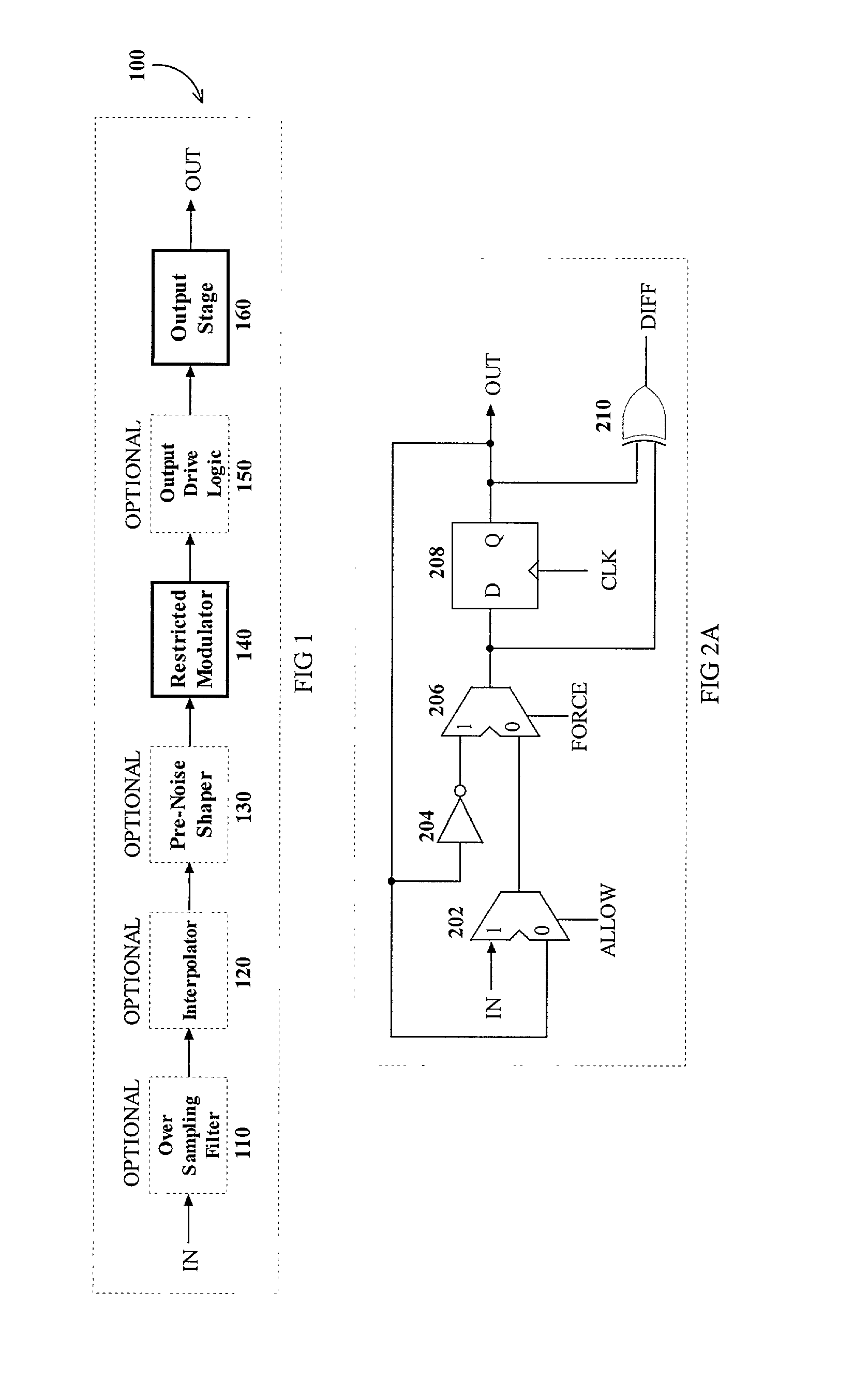Modulator for digital amplifier
a digital amplifier and modulator technology, applied in pulse manipulation, pulse characteristics measurement, pulse technique, etc., can solve the problems of quantization noise of digital pwm signals, complex modulator, and non-linear process, and achieve the effect of increasing the cost of the complex modul
- Summary
- Abstract
- Description
- Claims
- Application Information
AI Technical Summary
Benefits of technology
Problems solved by technology
Method used
Image
Examples
embodiment 1200
[0055]FIG. 12 shows yet another alternative embodiment 1200. In this embodiment, a digital input signal is applied to the IN port of subtractor 1202. The remaining elements between subtractor 1202 and the output signal OUT are configured and operate the same as the same elements in FIG. 11. In the embodiment shown in FIG. 12, however, the feedback loop feeds the signal from output stage 510 to loop gain amplifier 1104, which attenuates the signal to conform to the levels of the input signal IN, and applies the attenuated signal to the cascade combination of analog filter 1106 and A / D converter 1108. The output signal of the analog-to-digital converter is the second input signal to subtractor 1202. As described above with reference to FIG. 11, in an alternative embodiment, the feedback loop can be taken after output filter 512. In yet another alternative embodiment, both the output stage 510 and the output filter 512 may provide feedback signals which are summed (not shown) before be...
embodiment 1300
[0056]As described above in connection with FIGS. 1 to 5, the input signal IN may be, for example, the output signal generated by an analog sigma-delta modulator. An embodiment 1300 of such an analog sigma-delta modulator is shown in FIG. 13. Typically, analog sigma-delta modulators are used as a component in a sigma-delta analog-to-digital converter. In this embodiment of the invention, the sigma-delta modulator is used to generate a one-bit sampled signal, having digital signal levels, which is applied to the subtractors 302, 402 or 502 of the modulators shown in FIGS. 3A through SB.
[0057]In FIG. 13, an analog input signal is applied to the input port of summing element 1302, the output signal of which is coupled to the cascade combination of filter amplifier 1304 and filter 1306. The filter 1306 may, for example, have the same structure as filter 306, shown in FIG. 7. The output signal of filter 1306 is coupled to comparator 1308 which operates in the same way as comparator 308 i...
PUM
 Login to View More
Login to View More Abstract
Description
Claims
Application Information
 Login to View More
Login to View More - R&D
- Intellectual Property
- Life Sciences
- Materials
- Tech Scout
- Unparalleled Data Quality
- Higher Quality Content
- 60% Fewer Hallucinations
Browse by: Latest US Patents, China's latest patents, Technical Efficacy Thesaurus, Application Domain, Technology Topic, Popular Technical Reports.
© 2025 PatSnap. All rights reserved.Legal|Privacy policy|Modern Slavery Act Transparency Statement|Sitemap|About US| Contact US: help@patsnap.com



